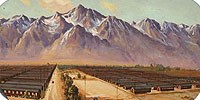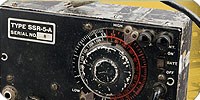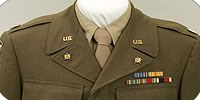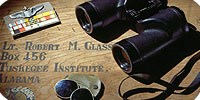The National Park Service (NPS) Organic Act of 1916, which created the agency, endowed the NPS with a sacred trust to conserve...
"....the scenery and the natural and historic objects and the wild life therein and to provide for the enjoyment of the same in such manner and by such means as will leave them unimpaired for the enjoyment of future generations."
As a result, the NPS protects a large and substantial collection of museum objects around the nation. Here are some interesting highlights related to World War II.
"....the scenery and the natural and historic objects and the wild life therein and to provide for the enjoyment of the same in such manner and by such means as will leave them unimpaired for the enjoyment of future generations."
As a result, the NPS protects a large and substantial collection of museum objects around the nation. Here are some interesting highlights related to World War II.
Video: Objects from the Aleutian Islands
Enjoy this video as it showcases some unique objects preserved in the Aleutian World War II museum. The video has no sound and features objects such a rifles, bayonets, and helmets along with black and white images from the Battle of the Aleutian Islands.The requested video is no longer available.
Virtual Museum Collections

Each family was assigned an number and loaded into buses, trucks, and trains, taking only what they could carry. Japanese Americans were transported under military guard to 17 temporary centers located at racetracks, fairgrounds, and similar facilities in Washington, Oregon, California, and Arizona. Then they were moved to one of ten hastily built relocation centers. By November, 1942, the relocation was complete.

Though the wooded hamlet of Prince William Forest Park was far from the front lines, the park did play a significant role in World War II. In early 1942, President Franklin D. Roosevelt appointed lawyer and World War I Medal of Honor recipient William "Wild Bill" Donovan as the head of the Office of Strategic Servicers (OSS), America's first centralized intelligence agency.

Virtual Media exhibit featuring the life of Dwight and Mamie Eisenhower.Dwight D. Eisenhower's military career spanned two world wars and a large part of the Cold War. His leadership as a general had a major impact on key world events.

Anna Eleanor Roosevelt (1884-1962) was the niece of President Theodore Roosevelt and the wife of President Franklin D. Roosevelt. Born into a privileged class, she became a successful social activist, party leader, teacher and journalist. By the time she entered the White House, these experiences and the networks she established helped her to transform the role of First Lady.

This exhibit celebrates Harry S Truman, an American Visionary. It highlights his formative years, family, increasing stature in Washington, the presidency, and return home.

The school at Tuskegee founded by Booker T. Washington had a well-respected aeronautical engineering program. Because of the Institute's flight program, the U.S. military selected Tuskegee Institute as a place to train African-American pilots for the war effort. Aviators came to Tuskegee, Alabama, to hone their flying skills. Their rigorous training at Moton Field and Tuskegee Army Air Field molded over 1,000 pilots into one of the most highly respected U.S. fighter groups of World War II.
Last updated: August 8, 2017
